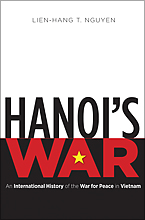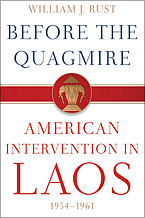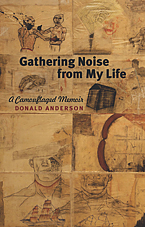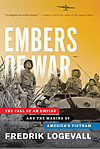 |
|||||||||||
|
BOOKS IN REVIEW, November/December 2012 Hanoi’s War: A Step Closer To A Complete History of the War REVIEWS BY MARC LEEPSON
Lien-Hang T. Nguyen, a history professor at the University of Kentucky, has gone a long way toward correcting that situation in her excellent new book, Hanoi’s War: An International History of the War for Peace in Vietnam (University of North Carolina Press, 444 pp., $34.95). This deeply researched, well-argued book looks closely at one part of the war: what happened after the Nixon administration took over in 1969, or “America’s endgame,” as Professor Nguyen puts it. Nguyen, who came to the United States with her parents from South Vietnam when she was a baby in 1975, has mined recently released documents from Vietnam, the U.S., and Europe, and she has conducted extensive interviews with former Vietnamese officials. Her book, as she puts it, “parts the bamboo curtain to present an international history of the Vietnamese communist war effort.” That international history also includes analyses of the war and peace-making actions of South Vietnam, the Soviet Union, China, and the United States. What happened in North and South Vietnam is central to Nguyen’s narrative. And in contrast to most Vietnam War history books written in this country—which put the U.S. at the center of the story—this book shows clearly that the Vietnam War was strongly shaped by North Vietnamese leaders. The main leader was not Ho Chi Minh, Vo Nguyen Giap, or Le Duc Tho, Nguyen argues. It was Le Duan, the general secretary of the Vietnamese Communist Party from 1957 until his death in 1986. Nguyen calls Le Duan “the architect, main strategist, and commander in chief of Vietnam’s war effort.” Despite being relatively ignored at the time and in the history books, Nguyen makes a strong case that Le Duan was the power behind the public façade of Vietnamese communist leadership, which consisted of the revered nationalist leader, Ho Chi Minh; the victor of Dien Bien Phu, Gen. Giap; and the man who represented North Vietnam at the Paris Peace Talks (and received the Nobel Peace Prize), Le Duc Tho. “Along with his right hand man, the redoubtable Le Duc Tho, Le Duan managed to stymie domestic opponents, temper powerful foreign allies, and defeat the world’s leading superpower in an epic struggle,” Nguyen writes. Nguyen backs up this claim with a mountain of evidence gleaned from extensive research she conducted into archival materials at the Vietnam Ministry of Foreign Affairs and other libraries and universities in Hanoi and in Saigon. That evidence buttresses her contention that the leaders in North and South Vietnam were “anything but puppets or passive players in the war for peace; they shaped American actions in Vietnam as well as the global Cold War order.” The United States “was not alone in prolonging the war,” Nguyen writes. “Often, American leaders were at the mercy of actors in Hanoi and Saigon who had their own geostrategic reasons to extend the fighting and frustrate the peace negotiations.” The leaders in Hanoi, she says, “possessed a grand strategy that included the construction of a police state in the North, the marginalization of indigenous revolutionaries in the South, and a policy of equilibrium in the Sino-Soviet split in order to conduct a total war for reunification [of North and South Vietnam] that brought them into an epic battle with the United States.” Although the United States “possessed its own internal and geostrategic reasons to intervene and stay in the Vietnamese conflict,” Nguyen notes, “it was leaders in Hanoi and Saigon who dictated the nature and pace of U.S. intervention. Domestic and Cold War pressures indeed played significant roles throughout American involvement in Vietnam, but Vietnamese elite actors created the context in which U.S. leaders operated.” Those Vietnamese leaders, North and South, she says, “were not only active agents in their own destinies, but they also heavily influenced the terms of American intervention and ultimately the outcome of the war.”
The state of affairs in Laos during the Eisenhower administration is the subject of Before the Quagmire: American Intervention in Laos (University Press of Kentucky, 323 pp., $40) by William J. Rust, a former journalist and the author of Kennedy in Vietnam: American Vietnam Policy, 1960-1963. This well-written and well-researched book hones in on American policies toward Laos from the end of the First Indochina War in 1954 to the passing of the baton to JFK in 1961. It often is not a pretty picture, and is one that, as Rust makes clear, is a stain on the legacy of the Eisenhower administration. “A case study in transforming a small foreign-policy problem into a large one,” Rust says, “the American experience in Laos in the 1950s was a key initial misstep on the road to war in Southeast Asia. Moreover, the political and military ‘cures’ prescribed by the U.S. government sometimes worsened the ‘disease’ of communist subversion in Laos.”
Anderson joined the U.S. Air Force by mistake, he says in this quirky, often humorous, often deadly serious, look at his life and times. As for that mistake, Anderson believed in 1970 that he would get swallowed up in the draft lottery, which began that year. What he didn’t realize until he joined the Air Force to avoid that fate was that since he had turned 24 in 1970, with the war “winding down,” as he puts it, he would have “moved past the specified draft-age window.” He joined the Air Force, Anderson says, “because I misinterpreted what the lottery meant for me.” He joined, Anderson goes on to say, “to avoid the walking tour of Southeast Asia, then spent the next twenty-two years in the service. In 1970, besides confusing the roles of the draft lottery, I also managed to select the single service then willing to commission colorblind officers—or, as the government puts it, color-vision-deficient persons.” Anderson then goes on to comment pithily on widely divergent topics that include the storming of the Bastille in the French Revolution, a stomach operation he endured several years ago, and reminiscences of his childhood in Butte, Montana. That’s typical of this scattershot, clever, meandering book. SEE ALSO: Arts of War on the Web | Books in Brief
|
|||||||||||
| |
|||||||||||
|
|||||||||||
8719 Colesville Road, Suite 100, Silver Spring. MD 20910 | www.vva.org | contact us |
|||||||||||












